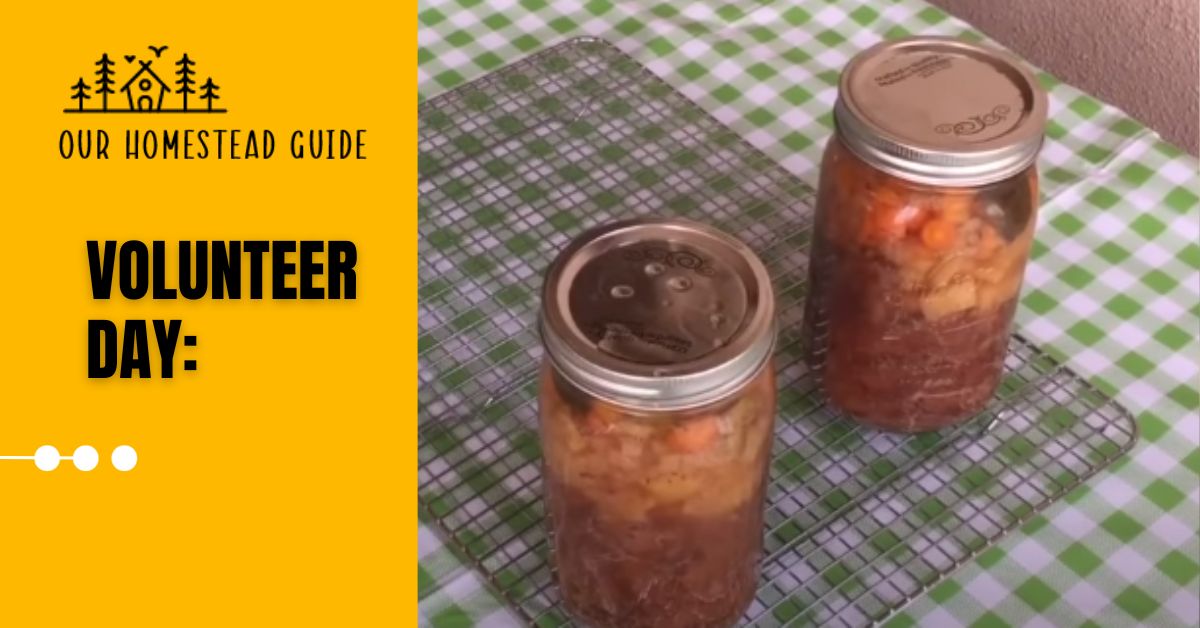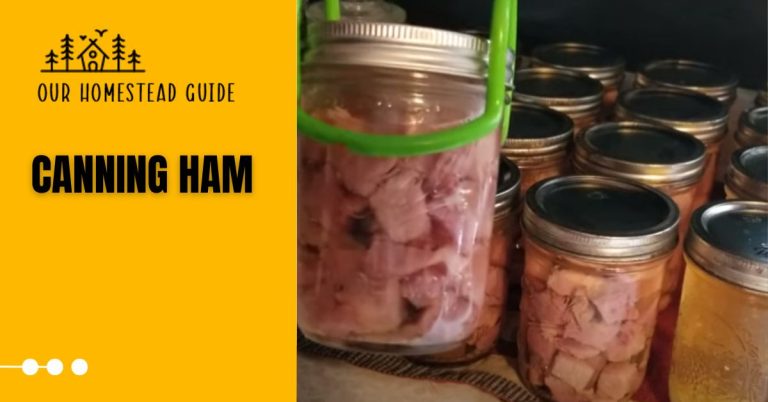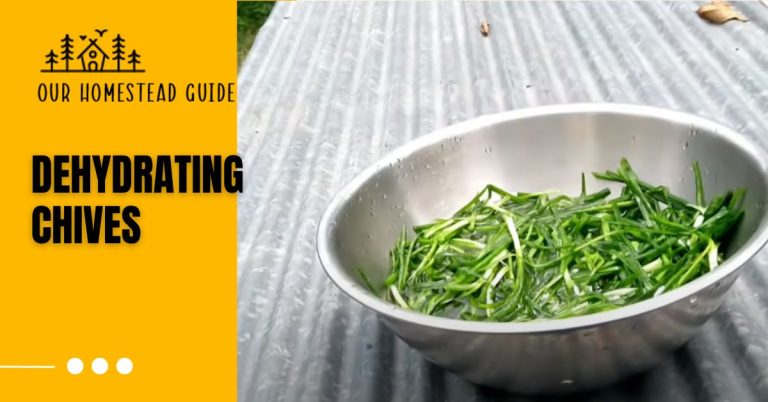How to Canning Beef Stew: step by step guide
Canning Beef Stew Even with a pressure cooker, beef takes a long time to cook. When you have jars of homemade Stew Beef on the shelf, it makes a great fast food that can be prepared for weeknights. This pressure Canning Beef Stew process results in a melt-in-your-mouth texture and a deep meaty finish. Gives good flavor that can stand up to braising very skillfully.
Don’t let the broth in the jar go to waste when you open the jar, it’s pure gold: save it to use in soups, stews, risottos, gravies, etc.
, we find a lot of recipes online that you can safely pack beef and vegetables for stew yourself very well Raw packing method Hot packing method is Much better than, and liked because it’s faster and will produce slightly less sweet greens.
How to Canning Beef Stew?
You must first choose a wonderful recipe before you can prepare beef stew. The following is a traditional beef stew recipe that is ideal for canning:
Ingredients:
two pounds of stew beef
4 cups of beef broth, 4 carrots, 2 onions, 2 cloves of garlic, 4 potatoes, diced, and 2 bay leaves, minced
pepper and salt as desired
Instructions:
- In a big pot, brown the beef stew meat.
- Sauté the onions and garlic until transparent after adding them.
- Add the bay leaves after pouring the beef broth.
- The carrots and potatoes are added after bringing to a simmer.
- Cook the vegetables until they are soft.
- To taste, add salt and pepper to the food.
1: Prepare Your Equipment
- Canning jars, lids, and bands should be gathered.
- Make sure your water bath or pressure cooker is prepared.
2: Fill Jars
Make sure the beef stew is hot before ladling it into sterilized jars, allowing about 1 inch of headspace to allow for expansion after chilling. Properly sealed jars will keep your delectable stew fresh for an extended period.
3: Remove Air Bubbles
Use a non-metallic device to carefully release any trapped air bubbles from the jars before sealing them when canning your beef stew. This easy procedure helps minimize the danger of deterioration by ensuring that your canned stew is safe and well-maintained. By carefully removing air bubbles, you help your homemade beef stew last longer and be of higher quality, so it will always be ready to please your palate.
4: Wipe Jar Rims
Canning Beef Stew Don’t forget to wipe the jar rims with a clean, wet cloth before canning for a tight seal. This easy procedure ensures a tight seal and gets rid of any potential impurities, maintaining the quality and safety of your canned items like beef stew.
5: Apply Lids and Bands
Put sterilized lids and bands on your jars once you’ve filled them with delectable beef stew. Keep in mind that the bands shouldn’t be extremely tight; they should be snug but not too tight. This ensures a good seal and permits air to escape during processing, keeping your stew safe and tasty for a long time.
6: Process Jars
Process the jars in a pressure cooker or water bath canner to properly preserve the beef stew. Observe the processing times advised for your altitude. Canning Beef Stew This important step ensures the removal of potentially hazardous germs, ensuring that your canned stew will be delicious and shelf-stable for a long time.
7: Cool and Store
As the jars cool, check that the lids are tightly fastened.
Place in a cool, dark place with a label.
Tips and Tricks for Success
- For the finest flavor, always use the freshest ingredients.
- To assure preservation and safety, stick to tried-and-true recipes.
- For processing timeframes, adjust for altitude.
- Depending on your recipe, use the proper canning technique (pressure cooker or water bath).
- Jars should be kept dry and cool, and the seals should be checked frequently.
Canning Techniques
It’s crucial to have the canning process down. The following are the main methods for canning beef stew:
Canning Beef Stew Ideal for low-acid items like meat, vegetables, and stews is pressure canning.
High-acid foods can be canned using the water bath method, although stews including meat are not advised.
Creative Ways to Enjoy Canned Stew
Beef stew from a can isn’t simply for last-minute needs. Use these serving suggestions as inspiration:
- Make a pot pie with beef stew.
- Use it as a wrap or burrito filling.
- Serve over rice or mashed potatoes.
- For a robust soup, add additional vegetables.
Your recipe will determine whether you should use a pressure cooker or a water bath canner. As a quick reference, use the following table:
| Recipe Type | Recommended Canning Method |
| Beef Stew (Low-Acid) | Pressure Cooker |
| Beef Vegetable Soup (High-Acid) | Water Bath Canner |
Home Canned Beef Stew Notes
- You can also use a pint jar for this recipe – just cut the processing time down to 70 minutes.
- If the meat you’re using is very fatty, it’s a good idea to drain the fat from the dutch oven after it’s browned, but before you add the rest of the simmering ingredients.
- On the other hand, excess fat can form bubbles around the edges of the jars during processing and will prevent your lids from sealing.
- It is never advised to add a thickener to a home stove before you put it on.
- So if you add flour or cornstarch to this recipe to thicken it, you have to add it after opening the jar to reheat.
- If you don’t have stew meat, you can also cut up different roasts that you might have in the freezer.
- Home-canned foods taste best if you use them within a year of storing them.
- However, they will last much longer on the shelf than that, although the nutritional value will decrease over time.
- Feel free to adjust the herbs and seasonings in this recipe to suit your tastes.
- When you are reheating the canned soup for serving, you can also add more salt etc.
Type of Beef for Stew
Beef stew meat is available in handy cut-up packets at your local grocery store, but you may save money by purchasing beef roasts and chopping your own.
When cooked over an extended length of time, lean meat can become tough. Choose a cut of beef with enough fat and connective tissue marbling that will break down and tenderize throughout the pressure canning process.
Chuck, chuck shoulder, chuck roast, bottom round roast, rump roast, eye round roast, top round, round tip roast, or pot roast are all good beef cuts for canning beef stew.
Use Beef Stock
The original recipe asks for quickly boiling the stew in water before canning it. Using beef stock adds flavor to the stew. You may use store-bought beef stock or broth, or homemade canned beef stock. If you use store-bought, try to get one that is low in salt, chemicals, and unidentified substances.
Add flavor
Canning Beef Stew After filling the jars, add a teaspoon of salt to each jar. If you use pint-sized jars, you may want to reduce the salt to 1/2 teaspoon.
The process of canning beef stew is pretty straightforward. I always start with a clean and dry canning jar and heat the water in the pressure canner while you are packing everything else in your jars.
Conclusion:
canning beef stew is an efficient and practical way to keep the delicious flavors and beneficial nutrients of this well-loved comfort food. It is a useful addition to any kitchen because it guarantees that a robust and filling meal is always ready when needed. We can protect our stew from rotting and preserve its quality for a long time by following the right canning processes and instructions.
We can use canning to preserve seasonal ingredients, cut down on food waste, and maintain a consistent supply of food in our pantry. Therefore, canning beef stew is a worthwhile culinary venture, whether you’re prepared for a busy week ahead or simply want to enjoy the taste of handmade goodness all year long.
Most Frequently Asked Questions!
1-Can you have beef stew at home?
Yes, using a pressure canner at home, you can securely preserve beef stew. To ensure food safety, it’s crucial to adhere to proper canning processes.
2- What equipment do I need for canning beef stew?
Canning Beef Stew A pressure canner, canning jars with lids and bands, a jar lifter, a canning funnel, a ladle, and a tool to eliminate bubbles are all necessary. Ensure that everything is in functioning order.
3- What ingredients should I use in my beef stew for canning?
For your beef stew, use only fresh, high-quality ingredients. Beef, vegetables (such as carrots, potatoes, and onions), beef broth or tomato sauce, and seasonings are typical ingredients. Use a reliable recipe for accurate measurements.
4- How do I prepare the jars and lids for canning beef stew?
After thoroughly rinsing them out with hot, soapy water, sanitize the jars by boiling them for 10 minutes. Canning Beef Stew Up until the time of use, keep the lids and bands in hot but not boiling water.
5- Can I have beef stew with noodles or rice?
Canning Beef Stew Noodles and rice might become mushy during the canning process, therefore it’s typically not advised to can beef stew with them. Instead, include them in the reheated stew.
6- What is the canning process for beef stew?
The main procedure of packing hot beef stew into sterilized jars, leaving some headspace, then covering the jars with lids and bands and processing them in a pressure canner at the necessary time and pressure for your altitude.
7- How long can I store canned beef stew?
Beef stew that has been properly preserved and stored for up to one and a half years or more in a cold, dark, and dry location. Before eating, look for any signs of rotting in the jars.
8- What are the signs of spoilage in canned beef stew?
It is recommended to throw away the canned stew if the jar’s lid is broken, there are obvious signs of mold, or strange scents, or the contents look slimy or discolored. When in doubt, always err on the side of caution.
9- Can I alter the seasonings or ingredients in my beef stew recipe for canning?
To guarantee food safety, it’s crucial to adhere to a reliable canning recipe. It’s generally not advised to change the ingredients or seasonings because doing so could influence the product’s pH level and safety.
10- Are there any safety precautions I should be aware of when canning beef stew?
Use the correct pressure canning techniques to avoid bacterial infection. Keep in mind that altitude has an impact on the processing time and canning pressure. For safe canning procedures, always refer to trusted sources or the USDA regulations.
you may also like this article.




